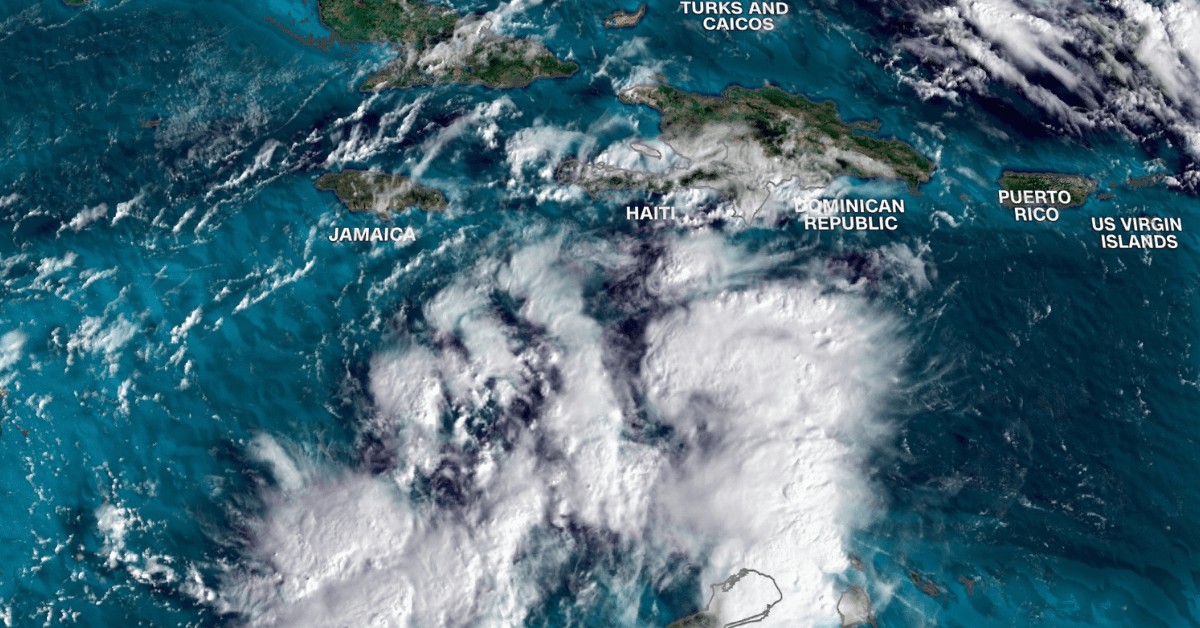As election day approaches in the U.S., attention is also focused on the Atlantic, where Tropical Depression Eighteen has formed in the Caribbean, with expectations of strengthening into Tropical Storm Rafael. This system could evolve into a hurricane, raising concerns for regions from Jamaica to Florida and along the U.S. Gulf Coast.
Currently, the storm is churning approximately 200 miles south of Kingston, Jamaica, moving north at 10 mph. The National Hurricane Center (NHC) has classified the system as a tropical depression and anticipates its upgrade to a named tropical storm later on Monday or Tuesday. Given the favorable conditions in the Caribbean, Rafael may intensify into a hurricane by midweek, impacting areas such as the Cayman Islands, Jamaica, and possibly western Cuba.
Caribbean Braces for Heavy Rains and Flooding
The storm is already making its presence felt. Jamaica is under a tropical storm warning, meaning winds between 39 and 73 mph could arrive by Monday evening, accompanied by heavy rains that could lead to flash floods and mudslides. The Cayman Islands, where a hurricane warning is in place, could see hurricane-force winds (74 mph or higher) as soon as Tuesday. Western Cuba has issued a hurricane watch, preparing for potential impacts within the next 48 hours. Coastal areas in these regions could also experience storm surge flooding.
Rafael’s Path into the Gulf of Mexico
While Rafael may gain strength in the Caribbean, it’s expected to encounter harsher conditions upon entering the Gulf of Mexico later this week. Forecasters at the NHC say strong wind shear, dry air, and cooler waters could prevent Rafael from maintaining hurricane status as it moves northward toward the U.S. However, uncertainty remains about its exact track and intensity in the Gulf, so coastal residents are advised to monitor updates closely.
Even if Rafael weakens, the storm is expected to bring significant rain to Florida and parts of the southeastern U.S. Starting Wednesday, the system could pull tropical moisture northward, increasing the chance of heavy rainfall in Florida, with gusty winds possibly affecting the Florida Keys and South Florida.
An Active Hurricane Season Continues
Rafael’s arrival adds to what has already been a highly destructive hurricane season. Earlier storms like Beryl, Helene, and Milton have brought devastation to many areas, resulting in over 300 deaths and causing approximately $130 billion in damages across the U.S. With the official hurricane season extending until November 30, residents in hurricane-prone areas must remain vigilant.
What Lies Ahead
The NHC and meteorologists continue to closely monitor Tropical Depression Eighteen, with an Air Force Hurricane Hunter plane gathering valuable data. The storm’s path remains uncertain, but its potential to bring widespread rainfall and wind-related impacts is a cause for concern for both Caribbean nations and U.S. coastal states. For now, residents in the Cayman Islands, Jamaica, Cuba, and along the U.S. Gulf Coast are encouraged to stay informed and prepared for the possible impacts of Rafael.
The season may be nearing its end, but the Atlantic remains active, reminding us of nature’s unpredictability.
